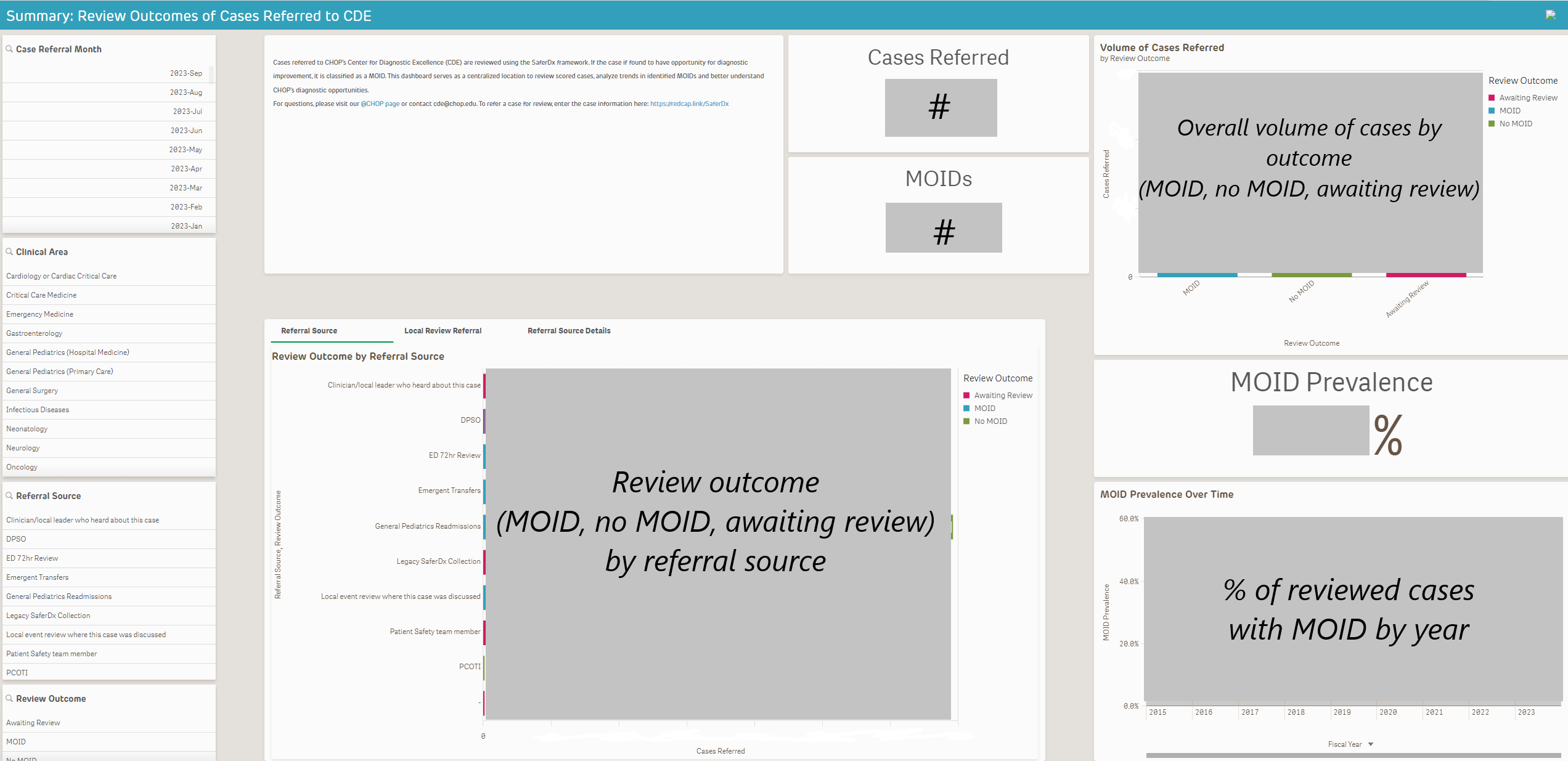Quality Improvement/Patient Safety
Session: Quality Improvement/Patient Safety 5
45 - Development and Implementation of a Diagnostic Excellence Dashboard
Monday, May 6, 2024
9:30 AM - 11:30 AM ET
Poster Number: 45
Publication Number: 45.2841
Publication Number: 45.2841

Irit R. Rasooly, MD, MSCE
Attending Physician
Perelman School of Medicine at the University of Pennsylvania
Philadelphia, Pennsylvania, United States
Presenting Author(s)
Background: Regulatory and patient safety organizations have articulated the importance of evaluating diagnostic performance to identify opportunities for diagnostic process improvement.
Objective: We sought to operationalize use of validated improvement tools (SaferDx and DEER taxonomy) and to identify and evaluate missed opportunities to improve diagnosis (MOID) within a free-standing, tertiary care children’s hospital.
Design/Methods: We developed a framework for identifying and obtaining inter-disciplinary review of potential MOID. Diagnostic review using SaferDx and DEER taxonomy has been incorporated into ongoing case review committee processes (e.g. emergency department 72h revisit with admission) that occur as part of institutional quality and safety initiatives. Clinicians and patient safety team members can submit individual cases for review identified in clinical care, as part of local event review, or through patient grievances. We also undertook retrospective review of pediatric hospital readmissions and patients emergently transferred to the pediatric intensive care unit, which were identified as potential high yield “triggers” for MOID. Data from all reviews is passively transmitted to a single database and displayed in a diagnostic excellence dashboard.
Results: Since 2021, over 110 clinician quality and safety leaders have received training in application of SaferDx and DEER taxonomy. Our institution has reviewed over 625 cases and identified more than 120 MOID. While initially focused on general pediatrics and emergency medicine patients, cases have been drawn from all clinical settings and 12 departments. Data about the clinical areas, referral sources, DEER taxonomy improvement domains, patient demographics (including race, ethnicity, preferred language, interpreter use, payor group, age, and child opportunity index) is available to patient safety leaders through our dashboard, which also allows for review of individual case level information.
Conclusion(s): In establishing mechanisms to evaluate (and ultimately improve) diagnosis, we were able to leverage existing case review mechanisms and research efforts to expand our understanding of opportunities to improve diagnosis. Integrating information in a common dashboard has expedited identification of important opportunities for improvement. This approach may be helpful to other institutions looking to develop an infrastructure for promoting diagnostic excellence.

